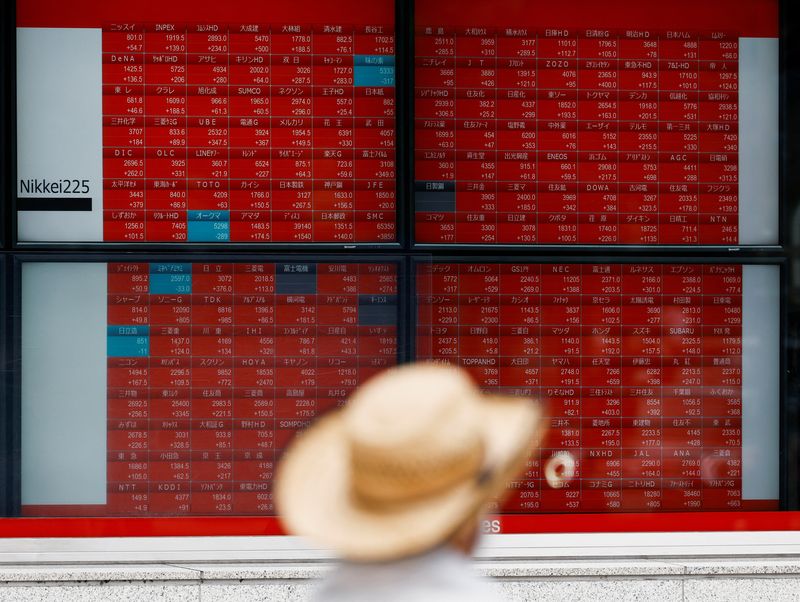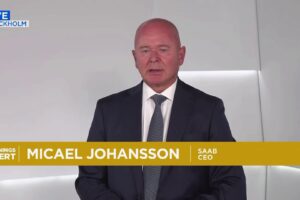
By Jamie McGeever
(Reuters) – A look at the day ahead in Asian markets.
The mood across Asian markets on Wednesday is likely to be one of caution, for two main reasons that should keep markets in relatively narrow ranges – lingering concern over the health of the U.S. economy, and Nvidia’s earnings later in the day.
U.S. and world stocks climbed higher on Tuesday but only slightly, while the dollar dipped again and Treasury yields were little-changed across the curve. None of that offers investors in Asia much to run with on Wednesday.
Given the lack of obvious global catalysts, regional events may take on added weight on Wednesday.
Bank of Japan Deputy Governor Ryozo Himino is scheduled to speak. This follows BOJ Governor Kazuo Ueda’s first public remarks last week since the central bank’s ‘hawkish hike’ in July.
Ueda’s tone on Friday was also hawkish, indicating that current rates are still well below ‘neutral’. This strengthens the case for further tightening this year beyond the mere 7 basis points of hikes rates markets are currently discounting.
The main economic indicator across the Asia/Pacific region on Wednesday will be Australian inflation. Economists polled by Reuters expect annual weighted consumer price inflation to have slowed to 3.4% in July from 3.8% in June.
That would be the lowest since February and closer to getting inflation back in the central bank’s 2%-3% target range for the first time since 2021. The Reserve Bank of Australia has held its cash rate at 4.35% since November last year, and last cut rates nearly five years ago.
The Aussie swaps market shows no rate cut is fully priced until December, with 100 bps of easing in total expected by the end of next year.
Thailand’s deputy finance minister Julapun Amornvivat and central bank governor Sethaput Suthiwartnarueput, meanwhile, both speak at a business seminar on Wednesday. This comes amid continued friction between the government and central bank over the path for interest rates.
The Bank of Thailand last week left rates on hold at 2.50% for a fifth meeting. But newly-sworn in Prime Minister Paetongtarn Shinawatra has called central bank independence an “obstacle” to economic growth, and her predecessor repeatedly called for rates to be cut.
Despite being an extremely low-yielding currency, the Thai baht has rallied strongly in recent weeks, perhaps because of the central bank’s refusal to cut rates just yet. It is now the only one of seven key Asian currencies to be up against the U.S. dollar so far this year.
Indeed, if there is one discernible global driver for investors in Asia on Wednesday it is the U.S. dollar’s persistent weakness, as the currency slipped to a fresh low for the year against a basket of major currencies.
Here are key developments that could provide more direction to Asian markets on Wednesday:
– Australia inflation (July)
– BOJ Deputy Governor Ryozo Himino speaks
– Bank of Thailand Governor Suthiwartnarueput speaks
(Reporting by Jamie McGeever)










